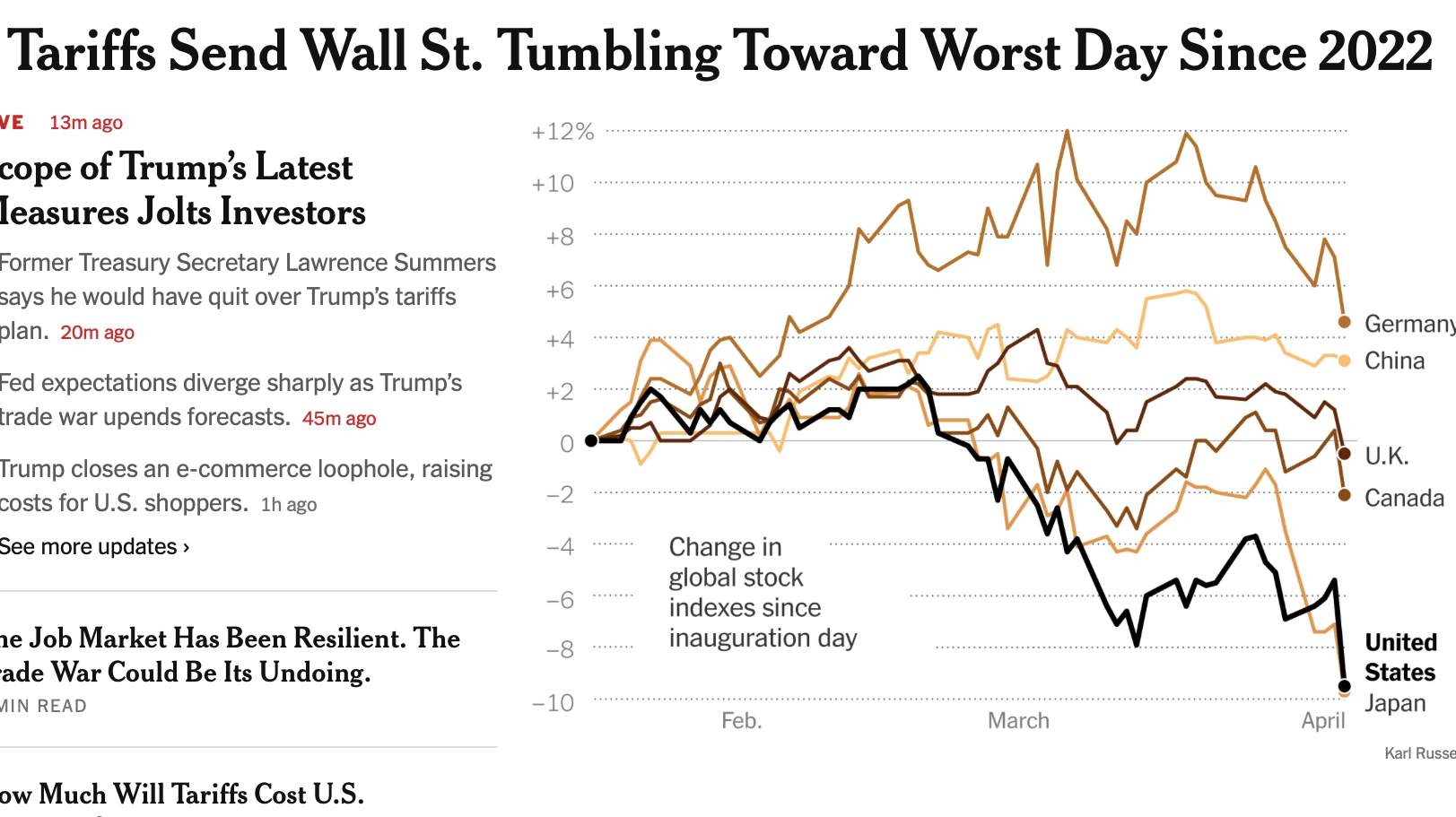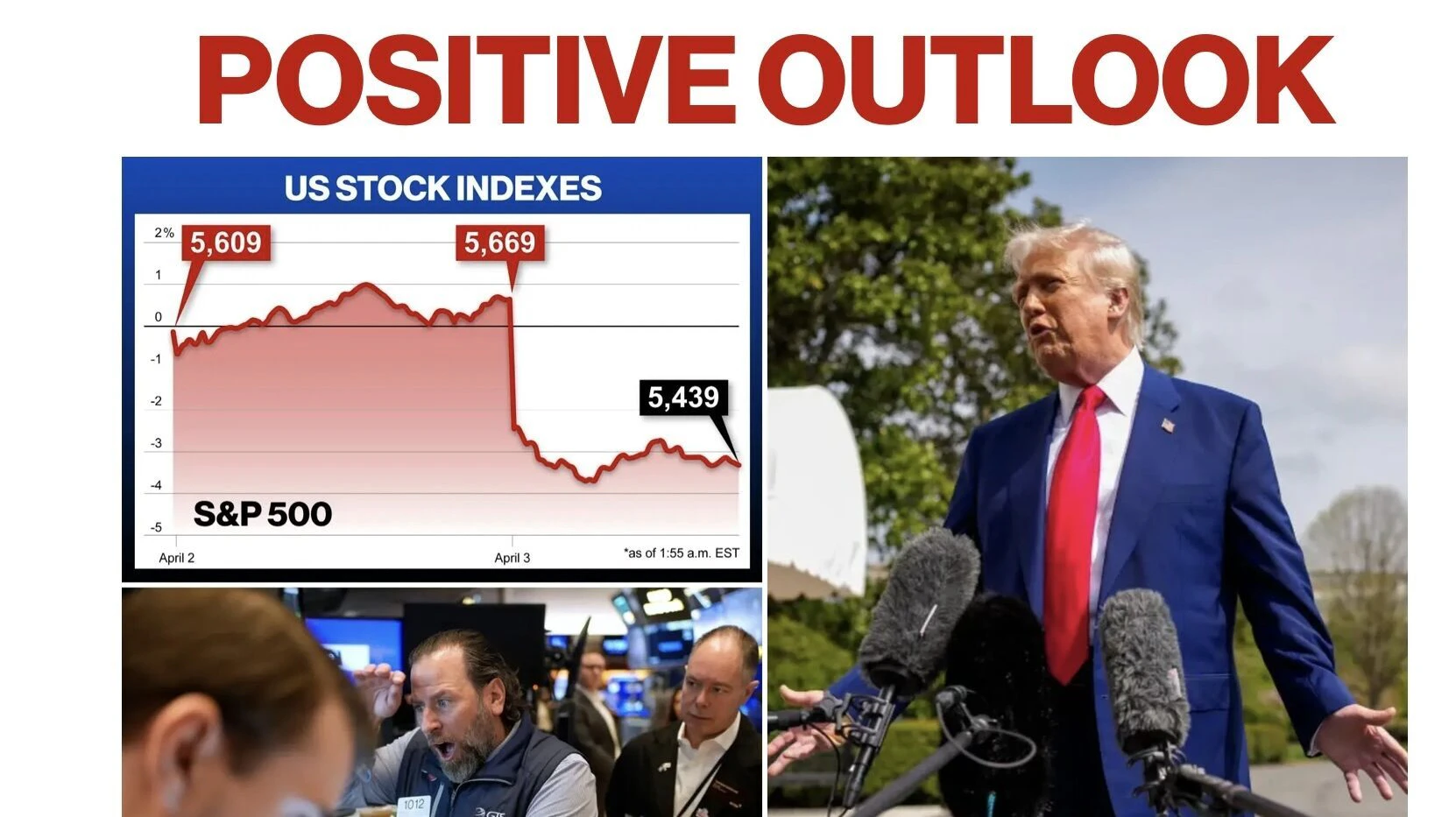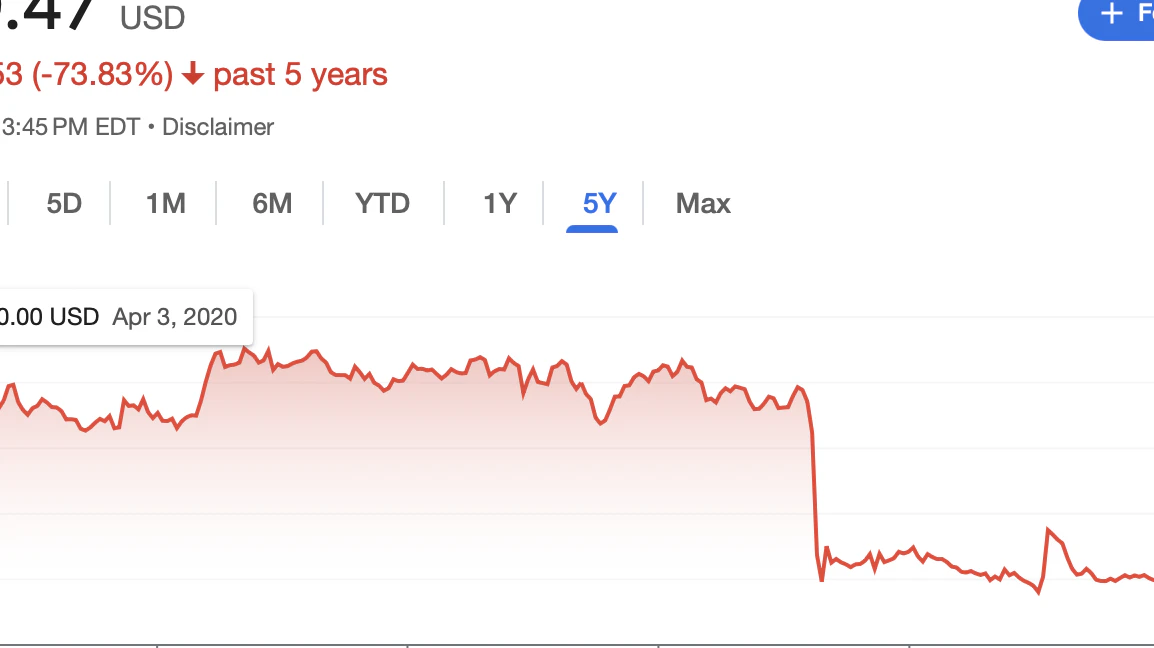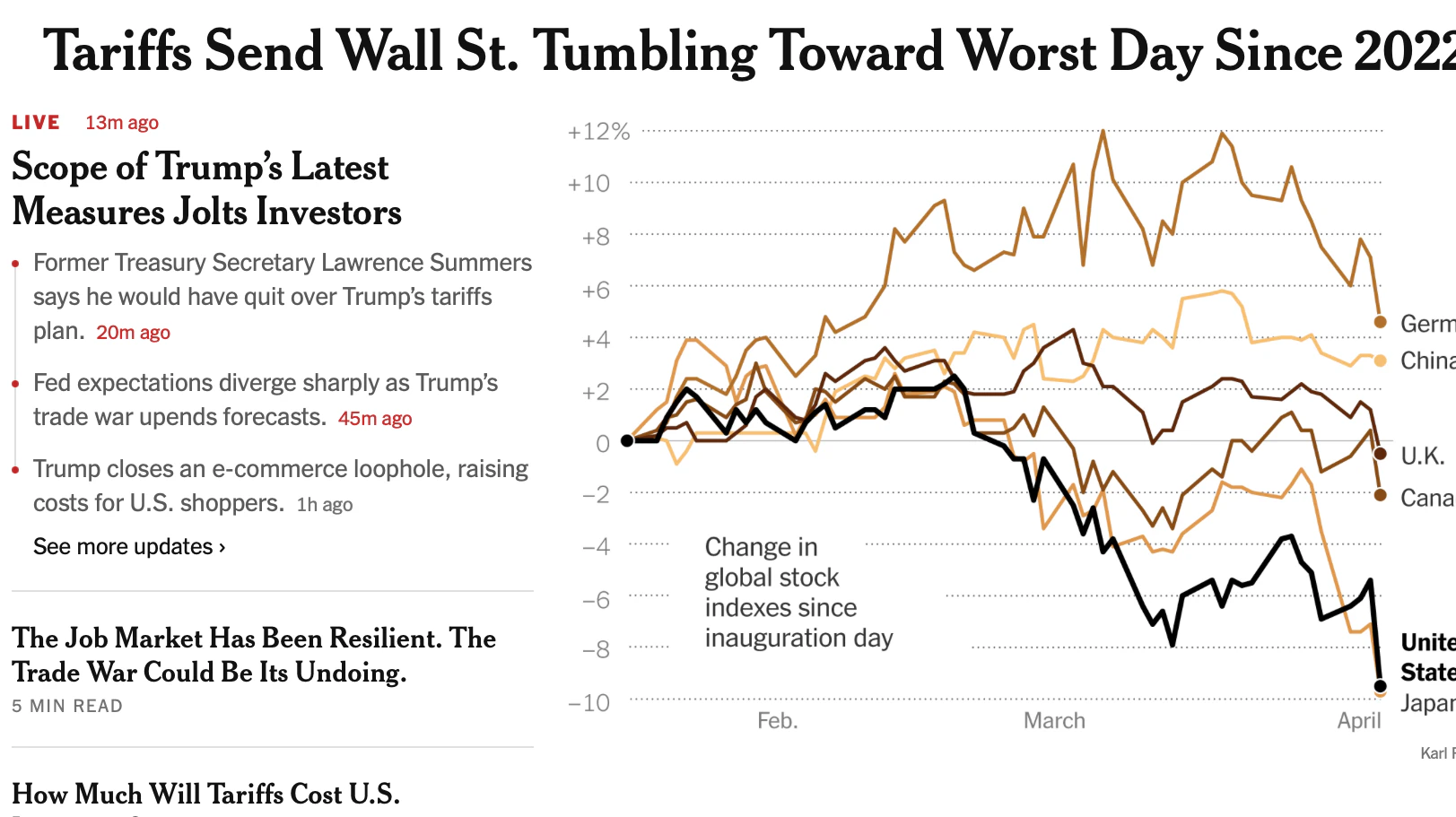If you've been following the news today, you've seen headlines that the stock market totally tanked following Pres. Donald Trump's unveiling of reset tariffs on foreign goods. These headlines are illustrated with charts of stock prices that look like Snow White's box office returns — dropping like a rock. Here's a screen capture of New York Times, where investors, we're told, are "jolted:"

Here's the Wall Street Journal this morning, with stocks plunging:

Here's the New York Post, which, while presenting a fairly optimistic take compared to other media, still has an alarming graph:

And as I'm writing this I see the Honolulu Star-Advertiser has just sent out a breaking news blast, carrying a Reuters article titled, "Recession fears send Dow plunging 1,600 points in market selloff."
You have to scroll down to the eighth paragraph of the article to find that this plunging 1,600-point sell-off represents a 3.98% dip to 40,542.71.
I'm not here today to talk about Trump's tariffs, or whether they're good or bad. I'm actually here to talk about my industry — the news media, and the way it uses true information in misleading ways to generate extreme emotion in readers, and lead them to unwarranted conclusions. This is usually done by leaving out context, and by focusing on the past five minutes.
If you shorten your time horizon enough, it's absolutely true that stocks plunged, plummeted, tumbled, crashed, whatever verb you think applies to, say, the S&P average over the past five days. I mean, just look at it:

Terrible! But back up. This is what it looks like over the past five years, including today's performance:

Do your feelings about the story change when you see the bigger picture? It's true, stock prices plunged, today. It's also true they plunged down to ... one of the highest points of the past five years. So who gets helped, and who gets hurt, by these editorial decisions to present only the five-day view?
How are the stock prices of some of Hawai‘i largest public companies faring? Let's take that five-year look at a few of them, from different sectors. Here's First Hawaiian Bank:

Here's Hawaiian Electric Industries, where international trade policies pale in comparison to the ramifications of the Lahaina fire:

And finally Matson:

Again, I don't know where stocks will go, or how this tariff realignment will play out. What I do know is that the evidence my industry has put in front of our faces today to create the impression that it's a disaster is highly skewed toward short-term panic.
Before I wrap up, a grateful tip of the hat to my friend, Alex Kendrick, for suggesting "Pipikaula Corner" as the name for my column. "Give them something to chew on!" he said. I like it! It's my third column in this business, after Pupu Platter at Pacific Business News and Afterthoughts at Honolulu Magazine.
I'm saving "Old Man Rants at Clouds" for my retirement.
Update 4/4: Stocks continued to drop in Friday trading. How much of this is due to yesterday's alarming coverage? The stock market is, among other things, a reflection of mass sentiment, a sentiment that the media has enormous power to shape. There are studies on this effect. Also worth noting, the world's largest media companies are themselves creatures of Wall Street, publicly traded, here's a list of them.
A. Kam Napier is editor in chief of Aloha State Daily. His irresponsible, socially unacceptable opinions are his own and not reflective of the ASD team.
A. Kam Napier can be reached at kam@alohastatedaily.com.





